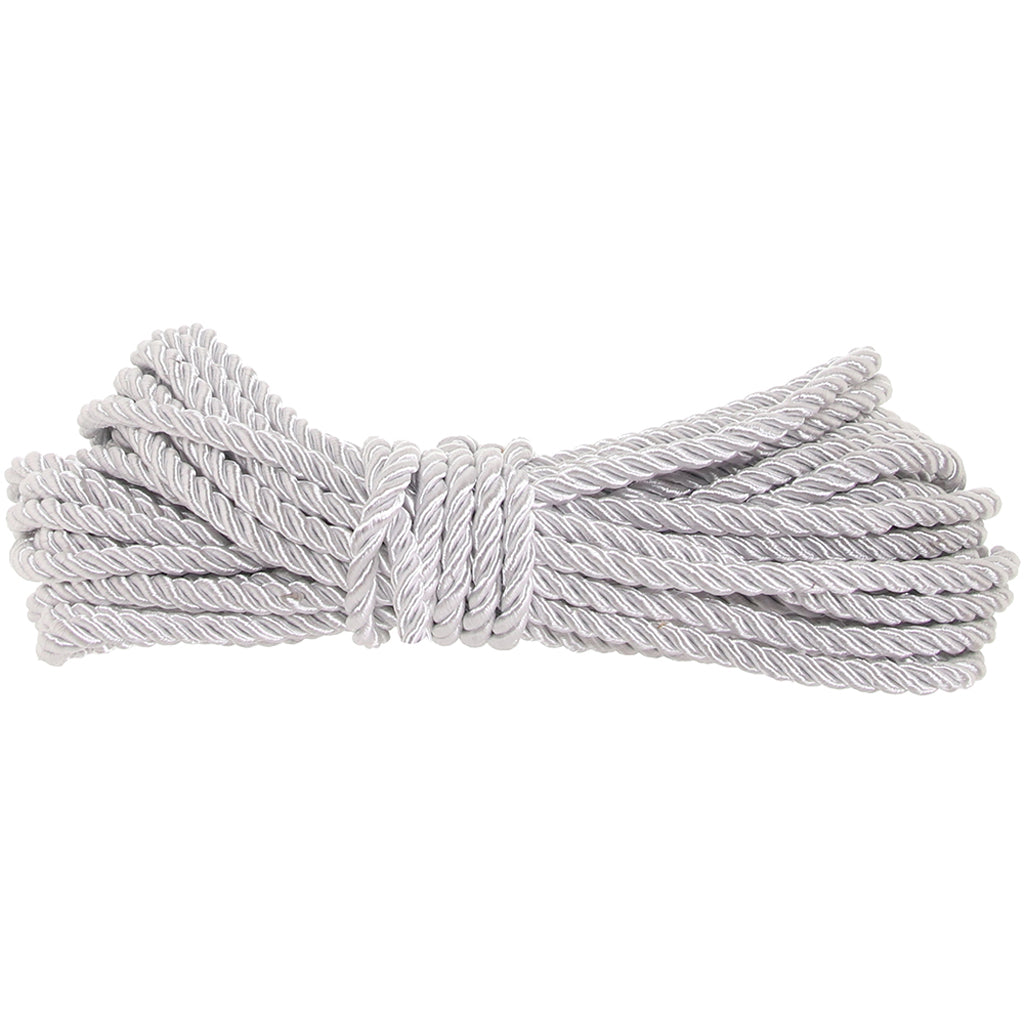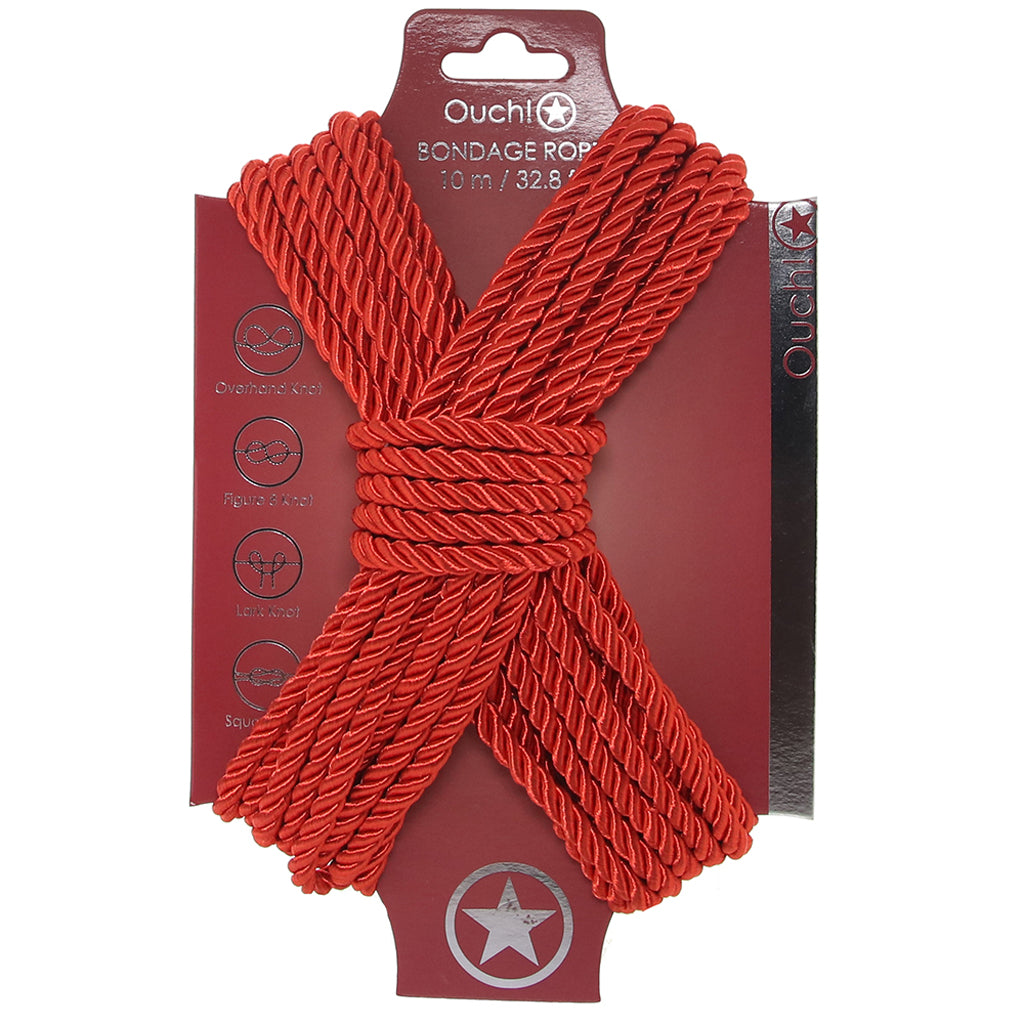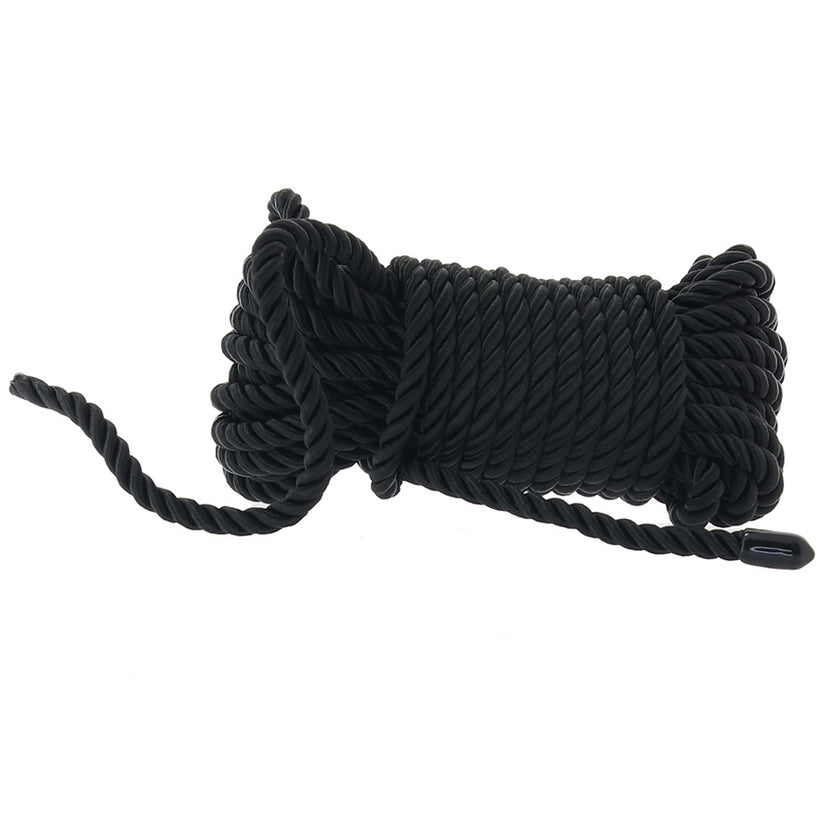
Do you want to add a little more excitement and eroticism to your bondage repertoire? You could learn a lot from a form of Japanese bondage that's commonly referred to as shibari. When you search the term online, you're met with a slew of gorgeous and stimulating photos of people bound up with natural or colorful ropes that have a series of decorative knots, wraps or geometric patterns in them. And the images don't just stop at people. You can find pictures of shibari bread, jewelry, clothing and even whisky floating around out there. It's an intriguing form of expression, and if you've never heard of it before, we're going to help you familiarize yourself with this intricate style of rope bondage.
What is Shibari?
As mentioned before, shibari originated in Japan. The word itself means "to tie decoratively." This technique is believed to be rooted in hojōjutsu, a rope restraint method utilized during the Sengoku and Edō periods. Hojōjutsu wasn't meant to be sensual or beautiful. It was meant to effectively restrain and torture captives. However, a more erotic form of Japanese bondage arrived on the scene around the late 1800s. It was called "kinbaku."
What is Kinbaku?
Kinbaku means, "tight binding," and this rope tying style made its way into kabuki theater performances around the late 19th century. This Japanese bondage method was created to serve as a safe, stage-friendly version of hojōjutsu. With kinbaku, actors could replicate hojōjutsu in plays without hurting each other, while still delivering rich visual experiences for audiences. After World War II, kinbaku took a stage dive into the world of fetish magazines, photos and risqué illustrations. There, it gained a wider audience that was intrigued by its beauty, mystery and complexity.
Today, the terms "shibari" and "kinbaku" tend to be used interchangeably. What's the difference? Shibari refers to the act of tying, binding or weaving. Kinbaku involves decoratively tying rope in a manner that restrains the body. Japanese bondage has become widely accepted in BDSM circles because it's a partner act that can be highly sensual nature. Kinbaku involves a great amount of trust, connection and communication. People also enjoy practicing kinbaku, or shibari, for its visual appeal – it can be a huge turn-on to see rope against naked skin, or to see a "rope bottom" in submissive or challenging positions while they're being tied up.
How Kinbaku Works
With kinbaku, you have a "rope top," or "rigger," who is the person that does the tying, and a "rope bottom," or "rope bunny," who is one being tied up. Some people also like to use the terms "giver" and "receiver," but ultimately, you can decide which titles you want to use. During a session, the rigger might create basic knots, wraps and weaves to bind the arms, wrists, feet or the entire body. Some kinbaku sessions, or sets, might last for hours in order to complete a design and take it all apart.
Since kinbaku rope tying involves pressure, it shouldn't be entered into lightly. Before getting started, educate yourself about Japanese bondage methods. It is possible to pick up a few basic knots, like the overhand knot, granny knot or cow hitch, by watching video tutorials or reading books, but it's best to take a class with an instructor who is legitimately certified in kinbaku. Research their certification claims thoroughly because if you pick up the wrong techniques from an unqualified instructor, you could seriously injure and traumatize your partner.
Types of Rope to Use
The ropes for sex used for kinbaku fall into two main categories – natural and synthetic. There isn't really a standard type of rope that's used for sessions. People tend to love or hate certain types of ropes for a wide variety of reasons. Some may prefer rope with a little give while others might prefer rope with a more organic look and feel. You can use whatever you want as long as you use it wisely.
If you're a new shibari rigger or rope bunny, PinkCherry's selection of fetish restraints includes a range of gorgeous options. For instance, the Ouch! Soft Japanese Rope comes in black and a variety of vivid colors, and Fetish Fantasy Series 35 Foot Japanese Silk Rope was directly inspired by shibari. Or, you could even give Sex & Mischief Enchanted Silky Sash Restraints a try as an alternative to rope.
Always Put Safety First
PinkCherry believes that everyone has the right to enjoy what they enjoy. We just ask that you do it consensually and safely. With Japanese rope bondage, it's important that the rigger and receiver are very familiar with the equipment being used and know how to communicate in the event of a mishap.
Here are some additional safety tips to keep in mind:
- Keep a pair of bondage safety scissors nearby in the event that you need to cut ropes off quickly.
- Never tie the ropes so tight that the recipient's limbs start to turn blue or purple.
- If you plan to incorporate suspension (even though it's not required for a satisfying kinbaku experience), use supplies that were designed to be load-bearing to decrease the risk of having an accident.
- Discuss the scene before you get started to ensure the rope bottom has a pleasant experience. If it's your first time or the first time you've practiced kinbaku with your partner, avoid using a gag during the scene. You'll want to be able to talk to each other. You can also determine a safe word before you begin.
- If you and your partner are more experienced and want to use a gag, establish a safe signal before the rigger starts tying.
Explore Japanese Bondage and More with Fetish Gear from PinkCherry
The world of shibari is an interesting one, and we know we've barely scratched the surface. That's a good thing because now, you can take a deeper dive into shibari and learn all there is to know about this beautifully erotic art of rope tying. And we're here to help with a wide assortment of bondage and fetish equipment for every style or mood. Shop our selection today and if you have any questions, contact us.









